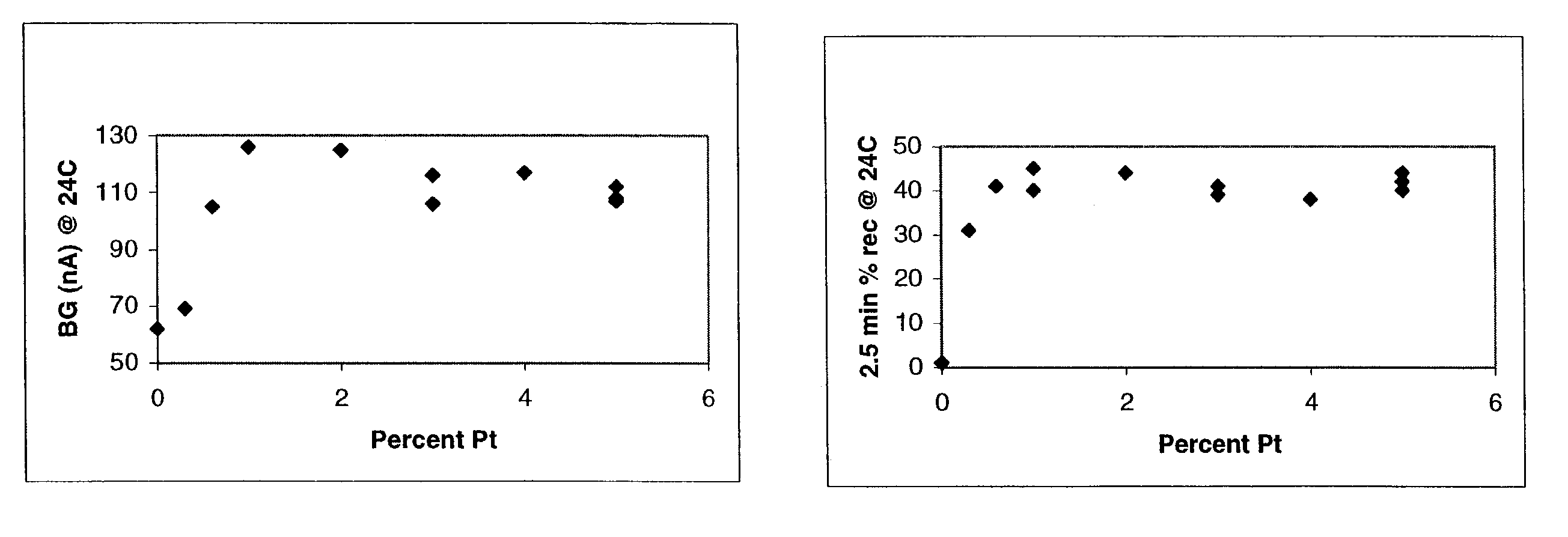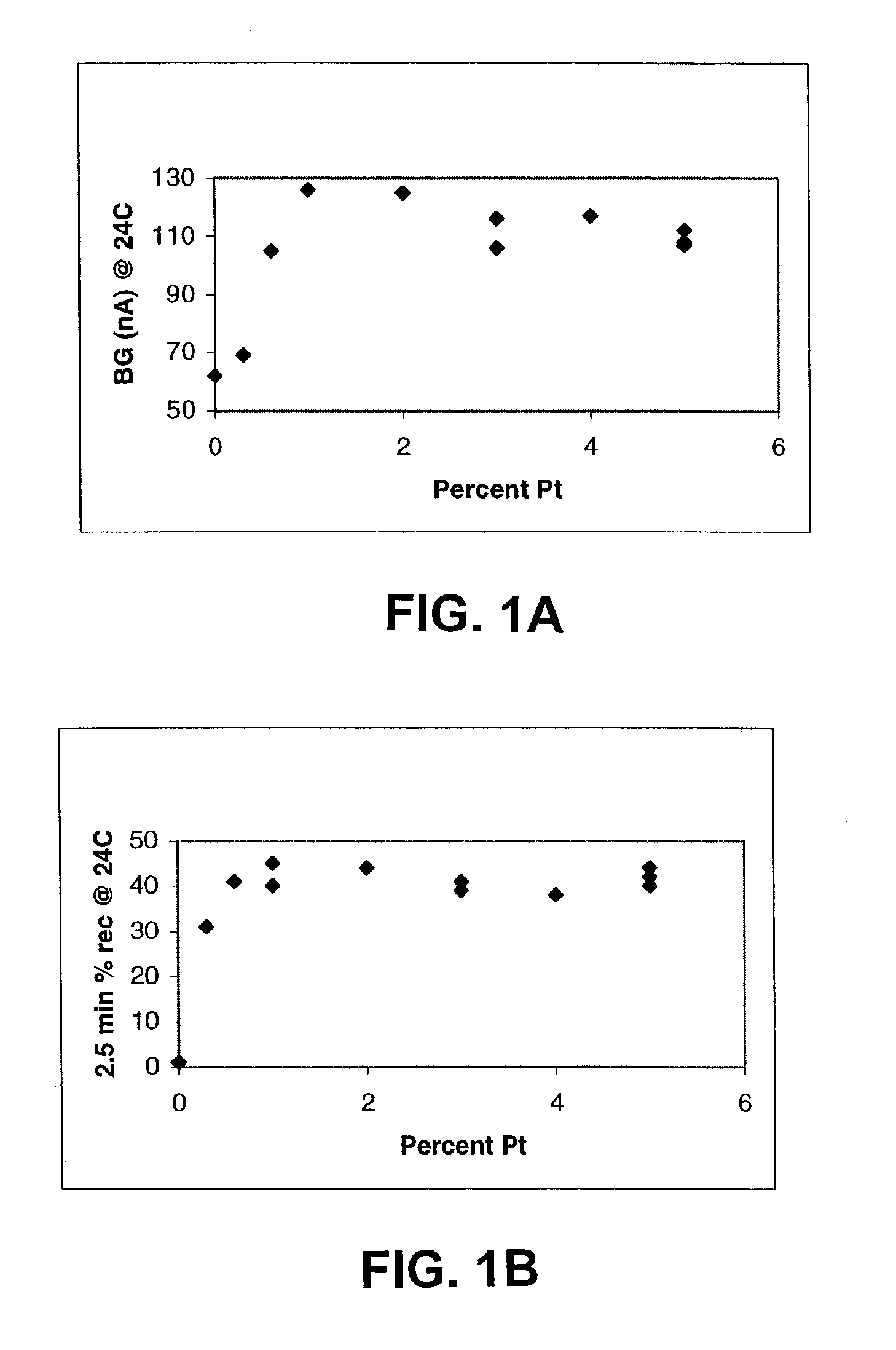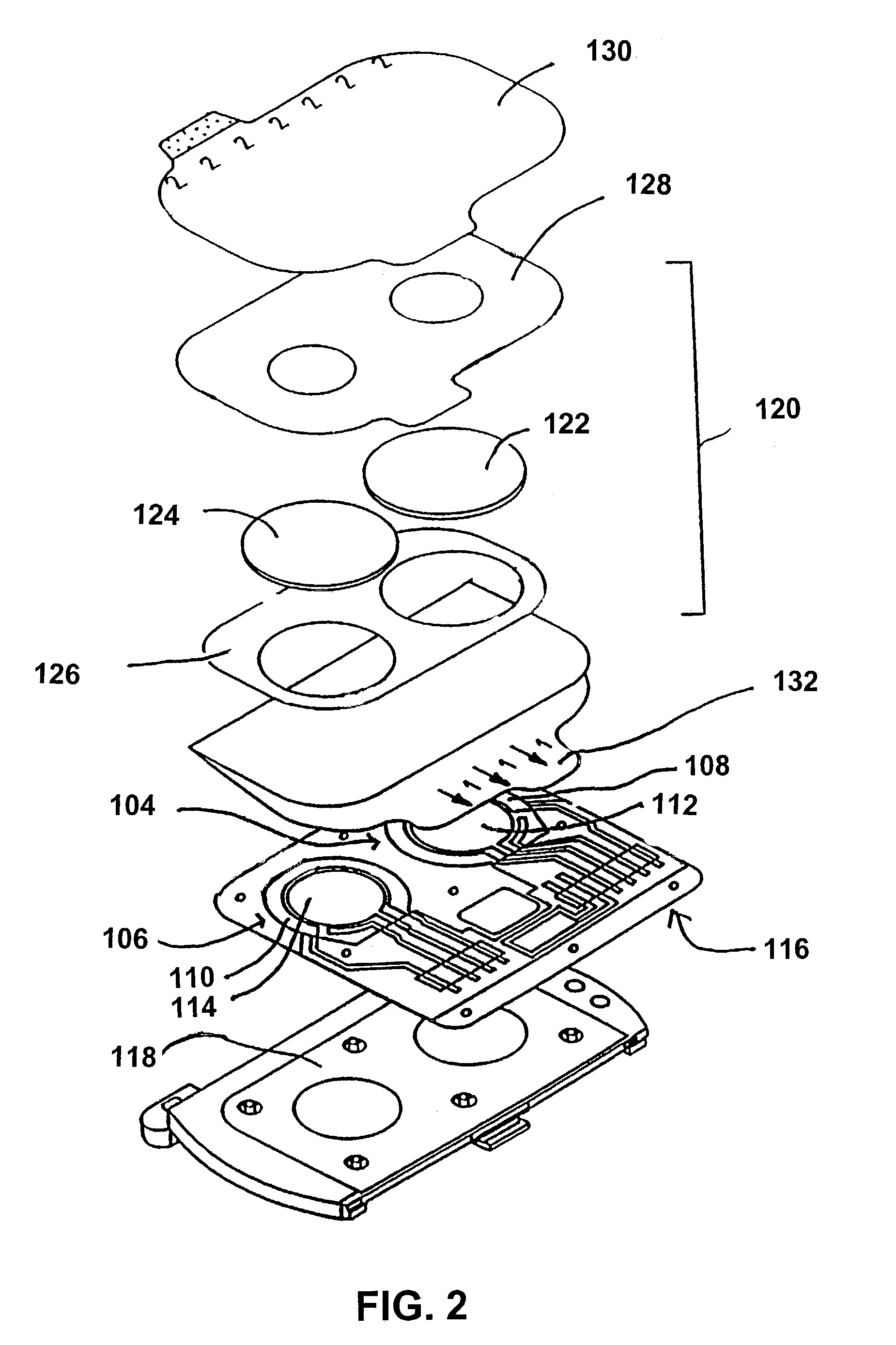Highly catalytic screen-printing ink
a technology of screen printing and catalytic ink, which is applied in the direction of ink, non-conductive material with dispersed conductive material, conductive layer on insulating support, etc., can solve the problems of high manufacturing cost, invasive procedures, and many as 7 bg measurements per day were not sufficient to detect a number
- Summary
- Abstract
- Description
- Claims
- Application Information
AI Technical Summary
Benefits of technology
Problems solved by technology
Method used
Image
Examples
example 1
Formulation of a 1% Catalyst Ink
[0168]A polymer solution was prepared by mixing one part poly(styrene-co-methyl methacrylate) (Aldrich, catalog #46,289-6) and three parts ethylene glycol diacetate (EGDA). Approximately 22.42 g of the polystyrene-co-methyl-methacrylate polymer solution was mixed with about 46.19 g EGDA. To the polymer solution were added 20.63 g graphite (Timrex SFG-15, Timcal), and 5.5 g 5% platinum-on-graphite (Type 98199, Johnson-Matthey). The solution was mixed by hand until a homogenous mixture was obtained. The ink was then subjected to high shear mixing with a triple-roll mill. Three passes through the mill were typically used. The jar of ink was kept rolling on a jar roller to maintain dispersion of the ingredients and to prevent settling. Before printing, additional EGDA may be added to adjust the viscosity for optimal printing. Ink screen-printing was performed using a 180 mesh stainless steel screen and a 90 durometer squeegee. The 1% catalyst ink formulat...
example 2
Comparison of Different Compositions
[0169]The performance of poly(styrene-co-methyl methacrylate) containing compositions containing different amounts of a catalyst were compared. Compositions having 0.6%, 0.3% and 0% of the catalyst were prepared by the method of Example 1 by adding an appropriate amount of platinum-on-graphite. Compositions having greater than 1% catalyst (e.g., 1 part platinum to 99 parts graphite) made by a modified method of Example 1. The total catalyst concentration was obtained by adding Pt / C to a platinum content of 1% and then variable amounts of platinum black were added to increase the platinum concentration to the desired level. The comparative data for formulations having total Ptb concentrations of 5% to 0% are shown in Table 1. The data for background percent platinum are plotted in FIG. 1A. The data for percent recovery plotted against total percent platinum are plotted in FIG. 1B.
[0170]
TABLE 124° C.32° C.TotalBG2.5 min10 min2.5 min7 min% Pt(nA)reco...
example 3
Comparison of Two Ink Formulations
[0175]Eight human subjects were used. Each subject wore six GlucoWatch G2 biographers (three per condition). Two conditions were tested:[0176]Condition 1: Control (Standard Sensor ink, Standard Hydrogel).[0177]Condition 2: Sensor Ink of the present invention, Standard Hydrogel.
[0178]The formulation of the sensor ink of the present invention was described above (e.g., Example 1). The standard ink sensor has been previously described (see, for example, EP 0 942 278 B1, or GB 2 335 278A, both herein incorporated by reference).
[0179]The study duration was 14 hours, 58 minutes. Reference blood glucose measurements were taken at least two times per hour. The reference blood measurements were taken twenty minutes prior to the corresponding GlucoWatch biographer measurements to account for the twenty minute lag time between taking the reference blood glucose measurement (i.e., by fingerstick) and obtaining the corresponding glucose measurement using the Glu...
PUM
| Property | Measurement | Unit |
|---|---|---|
| area | aaaaa | aaaaa |
| current | aaaaa | aaaaa |
| elapsed time | aaaaa | aaaaa |
Abstract
Description
Claims
Application Information
 Login to View More
Login to View More - R&D
- Intellectual Property
- Life Sciences
- Materials
- Tech Scout
- Unparalleled Data Quality
- Higher Quality Content
- 60% Fewer Hallucinations
Browse by: Latest US Patents, China's latest patents, Technical Efficacy Thesaurus, Application Domain, Technology Topic, Popular Technical Reports.
© 2025 PatSnap. All rights reserved.Legal|Privacy policy|Modern Slavery Act Transparency Statement|Sitemap|About US| Contact US: help@patsnap.com



